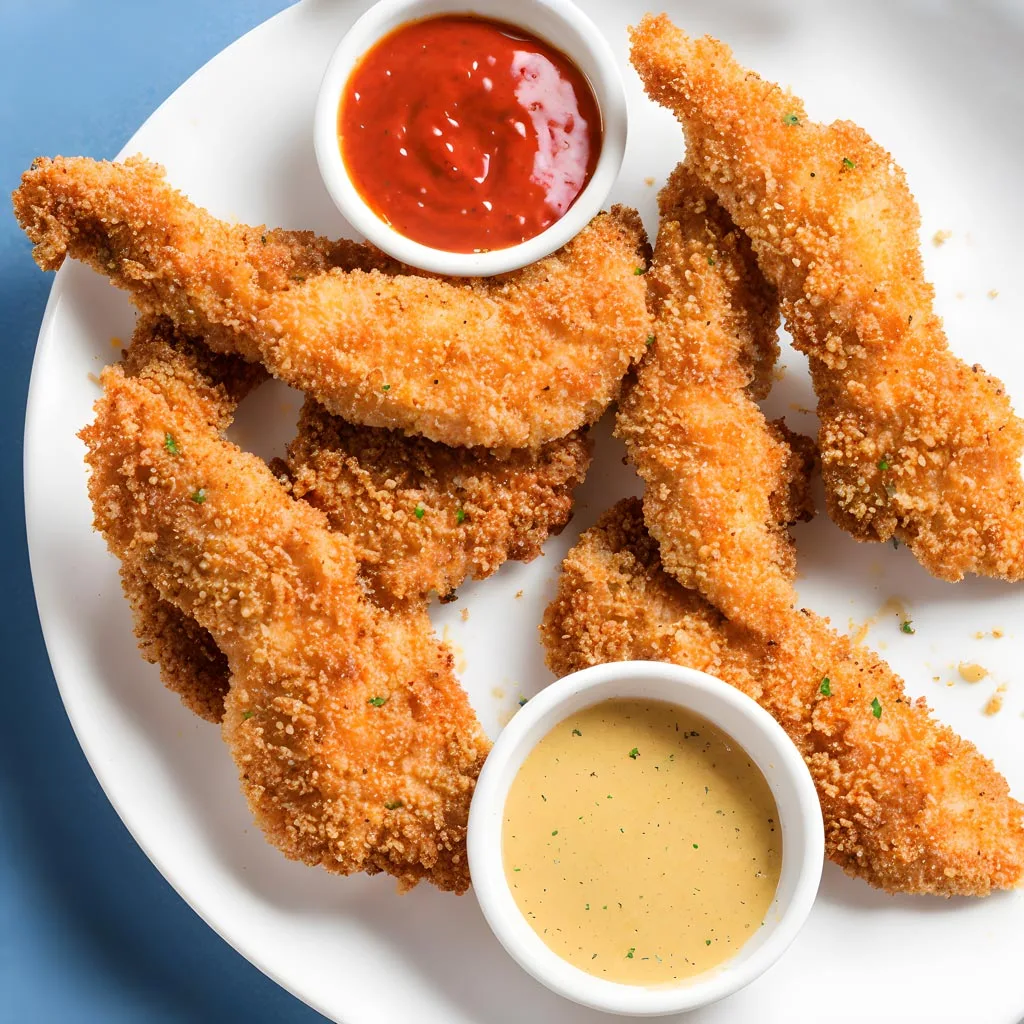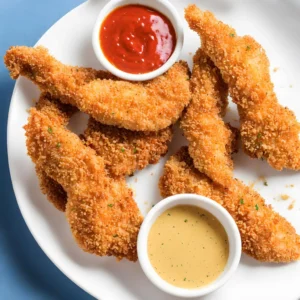
This recipe brings together tender chicken strips coated in a crunchy, golden breadcrumb crust, seasoned with a blend of aromatic spices. Whether it’s for a cozy family dinner or a casual gathering with friends, these chicken tenders are sure to be a hit.
Chicken tenders, also known as chicken fingers or chicken strips, have become a staple in many households and restaurants. Originating from the United States, they’re often found on menus as a popular appetizer or main course option.
While traditionally deep-fried, this homemade version allows you to control the ingredients and customize the seasoning to your preference.
Despite their restaurant-quality taste, making chicken tenders at home is surprisingly easy. With just a few simple steps and basic ingredients found in your pantry, you can whip up a batch of these crispy delights in no time.
Whether you’re a novice cook or an experienced chef looking for a quick and satisfying meal, this recipe is sure to become a go-to favorite.
Expert Tip: For a healthier alternative, try air-frying the chicken tenders instead of deep-frying them.
Chicken Tenderloins: Chicken tenderloins provide lean protein and a tender texture. When cut into strips, they cook quickly and evenly, resulting in juicy chicken tenders.
Plain Flour: The flour serves as the base for the coating mixture, helping to adhere the seasoning and breadcrumbs to the chicken strips.
Eggs: Beaten eggs act as a binder, allowing the breadcrumb coating to stick to the chicken, ensuring a crispy exterior.
Breadcrumbs: Breadcrumbs provide the crunchy outer layer of the chicken tenders, adding texture and flavor. Opt for plain breadcrumbs or seasoned ones for an extra kick.
Garlic Powder, Onion Powder, Paprika, Salt, and Black Pepper: This combination of spices adds depth and flavor to the chicken tenders, creating a delicious seasoning blend that elevates the taste of the dish.
Oil for Frying: Vegetable oil is used for frying the chicken tenders, resulting in a crispy exterior while keeping the chicken moist and tender.
Expert Tip: To infuse more flavor into the chicken, marinate the tenderloins in buttermilk for at least 30 minutes before coating them with the seasoning and breadcrumbs.
Expert Tip: For extra crispy chicken tenders, double coat them by repeating the flour-egg-breadcrumb coating process before frying.
To achieve crispy chicken tenders, make sure to coat each chicken strip evenly with flour, egg, and breadcrumbs, pressing the breadcrumbs firmly onto the chicken. Additionally, frying the chicken in hot oil and allowing it to cook until golden brown on both sides will result in a crispy exterior.
Yes, you can bake the chicken tenders in a preheated oven at 400°F (200°C) for about 20-25 minutes, or until they are golden brown and cooked through. Place them on a baking sheet lined with parchment paper and lightly spray them with cooking spray for a crispy finish.
Yes, you can freeze leftover chicken tenders for future enjoyment. Allow them to cool completely, then place them in an airtight container or freezer bag, separating each layer with parchment paper to prevent sticking. To reheat, bake them in the oven until heated through or microwave them until warm.
Absolutely! Feel free to customize the seasoning blend according to your taste preferences. You can experiment with different herbs and spices such as cayenne pepper, Italian seasoning, or chili powder to add a unique flavor profile to your chicken tenders.
The chicken tenders are cooked through when they reach an internal temperature of 165°F (75°C). Use a meat thermometer to ensure they are fully cooked, or cut into the thickest part of a tender to check for any pinkness or rawness.
Here are some more recipes for you to enjoy! If you my recipes don’t forget to rate and leave a comment.
If you have any recipe suggestions, please do not hesitate to ask me. A great way to stay in contact with me is through Instagram, Facebook, Twitter and YouTube. Don’t forget to tag me @CookwithNabeela in your recipe photos!

Subscribe now to receive my latest recipes directly in your inbox. Stay up-to-date and never miss out!

I love to cook! I want to share with you my favourite, delicious family-friendly recipes. I want to inspire you to create fantastic food for your family every day.
Add your first comment to this post